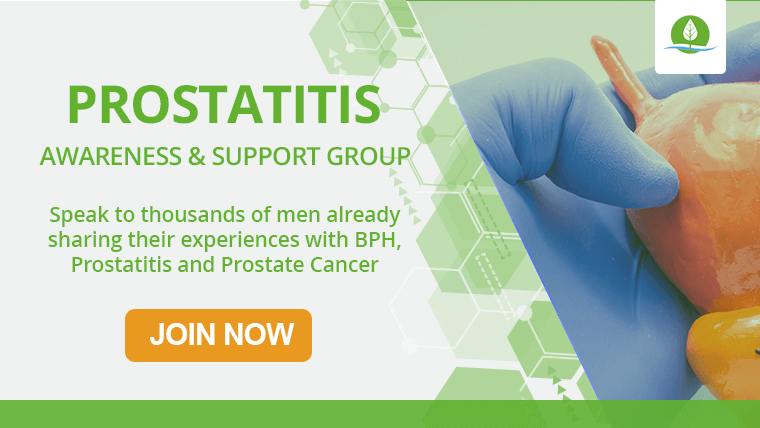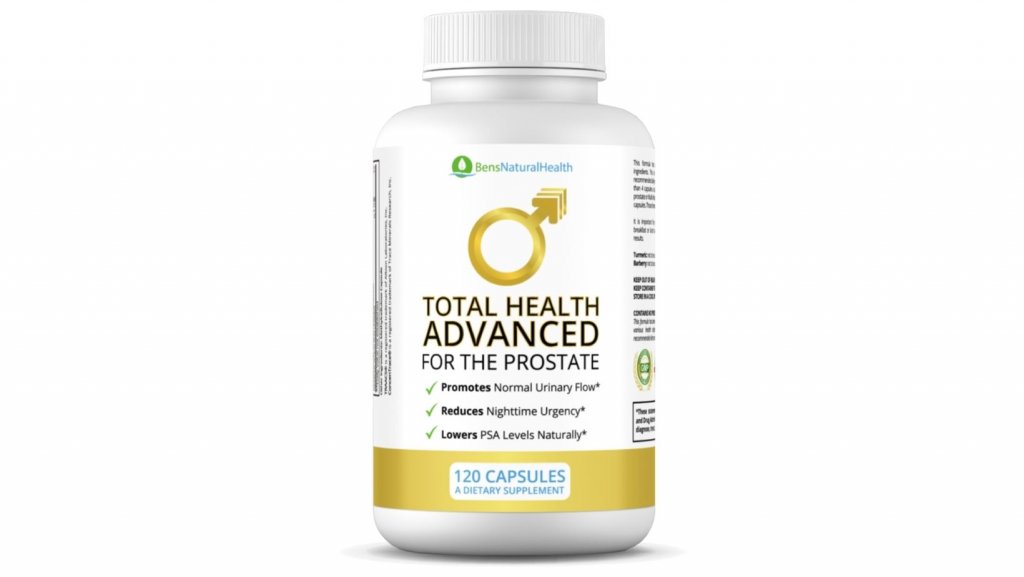- 1) What is prostate cancer?
- 2) What does prostate cancer feel like?
- 3) How common is prostate cancer?
- 4) What is the prostate cancer survival rate?
- 5) What are the symptoms of prostate cancer?
- 6) What are the 4 stages of prostate cancer?
- 7) Can prostate cancer spread?
- 8) What happens when prostate cancer spreads to the bones?
- 9) Can prostate cancer be cured?
- 10) Who is at higher than average risk for prostate cancer?
- 11) Is prostate cancer genetic?
- 12) Am I more likely to get prostate cancer if my father had it?
- 13) Is it true that black men are more likely to get prostate cancer?
- 14) Does masturbating increase my risk of prostate cancer?
- 15) Does drinking alcohol increase my risk of getting prostate cancer?
- 16) Is there anything I can do to prevent getting prostate cancer?
- 17) Does red wine help to prevent prostate cancer?
- 18) Do vitamin E and selenium protect against prostate cancer?
- Ben's Total Health Advanced
- 19) What are the symptoms of advanced prostate cancer?
- 20) What are the screening tests for prostate cancer?
- Source
Prostate cancer is the second most common cancer in men.
With many new cases diagnosed each year, an increasing number of men, their families, and friends are asking questions and looking for information about living with prostate cancer.
Below, we provide answers to some of the most common prostate cancer questions, including questions about risk factors, symptoms, screening, and treatment outcomes.
1) What is prostate cancer?
Prostate cancer is a malignancy of the prostate, a small gland in men located between the bladder and the penis. The prostate gland produces seminal fluid to aid the movement of sperm. Cancer in the prostate can arise when prostate cells undergo abnormal changes, leading to uncontrolled growth and division.
Prostate cancer is more commonly diagnosed in older men, but it is also possible for younger individuals to develop the disease, although less frequently. This shift in age may point to the pathogenic role of lifestyle factors, such as little physical activity and inappropriate diet.
Though it is often diagnosed in early, slow-growing stages, metastatic cells can emerge that invade the surrounding tissues and distant organs. Advanced metastatic prostate cancer is incurable and causes many deaths.
2) What does prostate cancer feel like?
Prostate cancer presents both psychological and physical challenges for patients. Men with prostate cancer face diagnosis and treatment decisions that can be stressful due to symptoms and side-effects.
Experiences of prostate cancer symptoms vary across individuals. The severity of symptoms depends on the stage of the disease and the size of the tumor. It may also depend on your unique characteristics, including prostate volume, age, and existing medical conditions. Old age and current urinary problems may increase the severity of your symptoms.
In the early, slow-growing stages of the disease, you cannot feel the tumor pushing against other organs and will have no pain. You may not be aware of prostate cancer for many years. However, when the tumor becomes large enough, it will cause symptoms by pressing on the urethra and blocking urine flow. You may experience one or more of the following symptoms:
The progression to advanced metastatic disease can cause further complications depending on the site and how quickly it is spreading. It often spreads to the bone, making them weaker and prone to fracture. Damage to the bones can make it painful to move around, limiting your ability to do routine things.
You may develop anemia due to reduced production of red blood cells in the bone, which may cause fatigue and breathing difficulties. In the lymph node, prostate cancer cells may block the circulation of lymph to cause swelling. The occurrence of these complications can have a negative impact on your quality of life. Fortunately, many options are available to manage prostate cancer symptoms, with or without the treatment of underlying cancer.
3) How common is prostate cancer?
Prostate cancer is one of the most commonly diagnosed cancers in men. Up-to-date statistics on the number of new cases may vary from year to year. The disease causes thousands of deaths, accounting for 4% of all cancer-associated deaths in men. Epidemiological data show it affects more than 50% of men over the age of 65 years and further 3.5% men under 50 years.
More than 30% of men who died for other causes have evidence of prostate cancer. Combined with the rising incidence, these observations make prostate cancer a common disease, especially in men older than 65 years.
4) What is the prostate cancer survival rate?
The last few decades have seen improvements in the treatment of prostate cancer. Despite the side-effects of radical treatment options (prostatectomy and radiotherapy), most men treated for localized prostate cancer remain alive 10-years after diagnosis. However, your chance is influenced by the stage of the disease at diagnosis.
Most men diagnosed with local or locally advanced prostate cancer will live at least five years after their diagnosis. For men diagnosed with advanced metastatic disease, the 5-year survival rate is 31%.
Prostate cancers are often slow-growing, which can contribute to favorable survival rates for many individuals, but survival outcomes are influenced by various factors Thus, the combined (local, locally advanced and advanced)10-year survival rate is 98%. These numbers are significantly better than rates observed for other cancers, such as pancreatic and lung cancers.

5) What are the symptoms of prostate cancer?
Prostate cancer presents with several symptoms, particularly genitourinary complications affecting the urethra and the bladder. You may experience one or more of the following symptoms:
- Frequent urination, with or without weak flow
- Blood in the urine or seminal fluid
- Erectile dysfunction
- Pain when sitting, urinating or ejaculating
- Pain in the back, hips, pelvic area or other bones
- Unexplained weight loss
- Bowel complications
- Swelling of the legs or feet
- Fatigue
Other conditions affecting the prostate gland, such as prostate enlargement, infection, or inflammation, can cause similar symptoms. If you experience any of these symptoms, it’s important to seek medical help for a proper evaluation to determine the underlying cause, which may include various conditions, including the possibility of cancer.
Note that early detection and treatment improves your treatment outcome. You can find more information on these symptoms at https://www.bensnaturalhealth.com/blog/prostate-cancer-symptoms/ .
6) What are the 4 stages of prostate cancer?
Doctors use a well-defined staging system to describe the size of the tumor, its location, and if or where it has spread. The stage of prostate cancer is divided into four main groups, assigned by combining the TNM system (American Joint Committee on Cancer), Gleason groups, and PSA levels.
The stages include:
- Stage I – early-stage and slow-growing
- Stage II – a localized tumor with a risk of growing and spreading
- Stage III – locally advanced cancer with increased risk of spreading to distant organs
- Stage IV – advanced metastatic disease
You can find more information on these stages and their sub-groups at https://www.bensnaturalhealth.com/blog/prostate-cancer-symptoms/ .
Additional information on stage-specific treatment options is described in https://www.bensnaturalhealth.com/blog/how-to-decide-between-radiation-or-surgery-for-prostate-cancer/ .
7) Can prostate cancer spread?
In some cases, metastatic cells emerge with the ability to invade surrounding tissues and distant organs. Untreated localized prostate cancer can progress to advanced disease (Stage III and IV), affecting the pelvic area, lymph nodes, and bones.
Men with advanced or metastatic disease have a poorer outcome compared to those with early-stage disease. It is critical to seek medical help before cancer becomes incurable.
8) What happens when prostate cancer spreads to the bones?
Prostate cancer often spreads to the bones, where it causes significant pain. Bone metastasis increases the risk of fracture because cancer cells weaken the bone.
Hypercalcemia, excessive calcium in the blood can also develop following bone metastasis, leading to vomiting, dehydration, and loss of appetite. The bone marrow produces blood cells; thus, prostate cancer in the bone can reduce the amount of oxygen-carrying red blood cells. This effect on oxygen levels leads to fatigue, breathing complications, and in severe cases, organ failure.
9) Can prostate cancer be cured?
Treatment outcomes for cancers, including prostate cancer, are influenced by several factors, including the stage of the disease and its progression rate. These are important considerations when discussing treatment options with your healthcare provider. Curative approaches for prostate cancer can treat localized and locally advanced disease.
Surgical and radiation therapy are the only definitive treatment to cure prostate cancers at these early stages. However, there is no cure for metastatic prostate cancer occurring after treatment relapse. Note curative therapy may only be beneficial to younger men because of the negative of treatment side-effects on quality of life.
10) Who is at higher than average risk for prostate cancer?
Several risk factors have been demonstrated to increase the risk of prostate cancer, including:
- Family history of prostate cancer
- Race
- Old age
- Heavy alcohol abuse
- Exposure to herbicides, insecticides and certain organic compounds
- Certain infections
- Sedentary lifestyle
- Obesity
- Altered intestinal microorganisms
You can find evidence on their causal link between these risk factors and prostate cancer at https://www.bensnaturalhealth.com/blog/Prostate-Cancer-What-Are-The-Risk-Factors/ .
11) Is prostate cancer genetic?
Both genetic and environmental factors play a role in the development and progression of prostate cancer. A family history of prostate cancer is the strongest risk factor for this disease.
Inherited genetic variations cause 5-10% of all diagnosed prostate cancer – variations in genes related to immune function and androgen play essential roles in prostate cancer development.
12) Am I more likely to get prostate cancer if my father had it?
There is a strong link between prostate cancer and family history. Consistently, research demonstrates that prostate cancer cases are likely to have a first-degree relative with a history of the disease. Thus, you have a higher than average risk of prostate cancer potentially through shared genetics, lifestyle, or patterns of environmental exposures.
13) Is it true that black men are more likely to get prostate cancer?
Prostate cancer incidence exhibits significant variations among racial groups. Black men have a higher risk of the disease and are likely to be diagnosed at a younger age with a more aggressive disease compared with men of other races.
The reasons for these differences remain unclear, but studies point to cultural differences in substance exposure and genetics. For more discussion on the race differences in prostate cancer risk, see https://www.bensnaturalhealth.com/blog/Prostate-Cancer-What-Are-The-Risk-Factors/ .
14) Does masturbating increase my risk of prostate cancer?
The evidence for the link between masturbation and prostate cancer remains controversial. Though levels of sex hormones correlate with the risk of prostate cancer, different approaches for studying the association between masturbation and prostate cancer have returned alternative results.
Some evidence suggests that frequent masturbation in young men increases the risk of early prostate cancer but lower the risk in older men.
15) Does drinking alcohol increase my risk of getting prostate cancer?
Heavy alcohol consumption is one of the most important modifiable risk factors for several cancers and cardiovascular diseases.
Drinking more than four drinks per day increases your risk of prostate cancer. However, moderate alcohol consumption does not increase the development of prostate cancer. Drinking less than the recommended daily volume of alcohol is beneficial to your general health.
For more, see https://www.bensnaturalhealth.com/blog/Prostate-Cancer-What-Are-The-Risk-Factors/ .
16) Is there anything I can do to prevent getting prostate cancer?
While factors like genetics, race, and age are beyond our control, taking positive actions aimed at modifiable risk factors may help reduce the potential risk of prostate cancer. These actions can be part of a proactive approach to promote overall health.
Lifestyle changes can help you reduce the risk of prostate cancer.
- Do regular physical exercise
- Eat a low-fat diet
- Ensure good gut microbiota
- Quit smoking
- Reduce alcohol consumption
- Eat tomatoes and other vegetables
17) Does red wine help to prevent prostate cancer?
Emerging evidence suggests that moderate consumption of red wine may have potential health benefits. However, its role in protecting against prostate cancer is still an area of ongoing research. Red wine contains high amounts of polyphenols, which act as antioxidants and inhibitor of cancer growth mechanisms. Like other alcoholic drinks, excessive amounts of red wine may increase your risk of cancer.
18) Do vitamin E and selenium protect against prostate cancer?
Studies examining the potential effects of vitamin E and selenium on prostate cancer risk have yielded conflicting results, highlighting the complexity of this area of research. Different approaches for measuring these vitamins (blood or nail concentrations) give largely different results.
SELECT cancer prevention trial found no association between blood vitamin E, selenium, and the risk of prostate cancer. Larger follow-up trial shows they may increase the risk of prostate cancer among healthy men. However, a large cohort study (NLCS) found a protective association with nail vitamin E and selenium levels.
Ben’s Total Health Advanced
If you will notice carefully Total Health Advanced uses natural vitamin E in the form of naturally mixed tocopherols. And that is something completely different.

The various studies, and there are many, showing that vitamin E is beneficial for the prostate are all based on natural vitamin E. The amount of selenium and vitamin E in Total Health Advanced will protect your prostate not harm you. Total Health Advanced is based on extensive research.
First of all, the form of vitamin E used in the select trial was alpha-tocopherol. In order for vitamin E supplementation to be beneficial it requires mixed tocopherols. High doses of alpha-tocopherol will deplete levels of gamma-tocopherol in our cells. Adequate levels of both are required to have an antioxidant effect. High levels of alpha tocopherol levels may indeed have a pro-oxidant effect instead of an antioxidant effect.
Total Health Advanced supplement for the prostate is a comprehensive source for the essential vitamins and minerals your body craves. Our highly bio-available and natural ingredients work synergistically with the ketogenic diet and short interval exercise strategies.
Together they support your immune system, maximize your own natural hormone production and balance, support normal blood sugar levels, lower stress hormone production, support the healthy structure and function of your brain and nerve cells and, most importantly, help combat oxidative damage in every cell of your body.
All the dosages are substantial, based upon the scientific studies for those ingredients – Total Health Advanced does not cut any corners. That is why Total Health Advanced for the prostate contains 4 large capsules per day compared to most prostate supplements, which normally consist of only one or two caplets, and multi-vitamin formulas that normally consist of only one pill.
Total Health Advanced provides a greater volume of important nutrients but also more quality. Total Health Advanced contains natural ingredients. So for example, 400 IU vitamin E in Total Health Advanced is natural mixed tocopherols. You will rarely find natural vitamin E in any other multi-vitamin formula.
In a Swedish study, natural vitamin E in combination with the 70 mcg of selenium chelate in Total Health Advanced reduced the risk of getting prostate cancer by 37%. A similar US study that used synthetic vitamin E in the form of Alpha D tocopherol produced no such benefit.
19) What are the symptoms of advanced prostate cancer?
Prostate cancer can spread to any organ, but mostly to the bones and lymph nodes. The symptoms of the advanced disease you experience will depend on the metastatic site.
You may experience one or more of the following symptoms:
- Constipation and diarrhea
- Dehydration and loss of appetite
- Anemia
- Hyperglycemia
- Pain in the back, hips, pelvic area, or other bones.
- Unexplained weight loss.
- Swelling of the legs or feet.
- Fatigue.
In addition, you may experience severe forms of urinary complications seen in localized disease.
20) What are the screening tests for prostate cancer?
Digital rectal examination (DRE) and prostate-specific antigen (PSA) tests are the two standard methods to screen for prostate cancer. Treatment decisions require a prostate biopsy to confirm the presence of cancer and its stage.
If your doctor suspects your cancer has spread to other organs, they may offer you bone scan, computerized (CT), positron emission (PET) tomography scans, or ultrasound. More recently, some medical providers offer additional genetic tests to estimate prognosis.
Get Your FREE PSA Lowering Diet Plan!
- Naturally lower PSA levels
- Reduce nighttime trips to the bathroom
- Enjoy better bladder control and urine flow
Explore More








